
New-age smartphones have come a long way and have all but replaced a slew of gadgets. In fact, for many, a smartphone is not just a medium for communication but is also a handheld gaming device, a pocket camera, you name it. What’s more, seeing how most phones ship with big, vivid screens, buyers often rely on their devices to watch TV shows and movies via OTT services like Netflix, YouTube, MX Player, etc. It goes without saying that your media consumption experience will vary from one device to another, so, today, let’s take a look at the best phones under Rs 25K that will lend you the most enjoyable movie-watching experience.
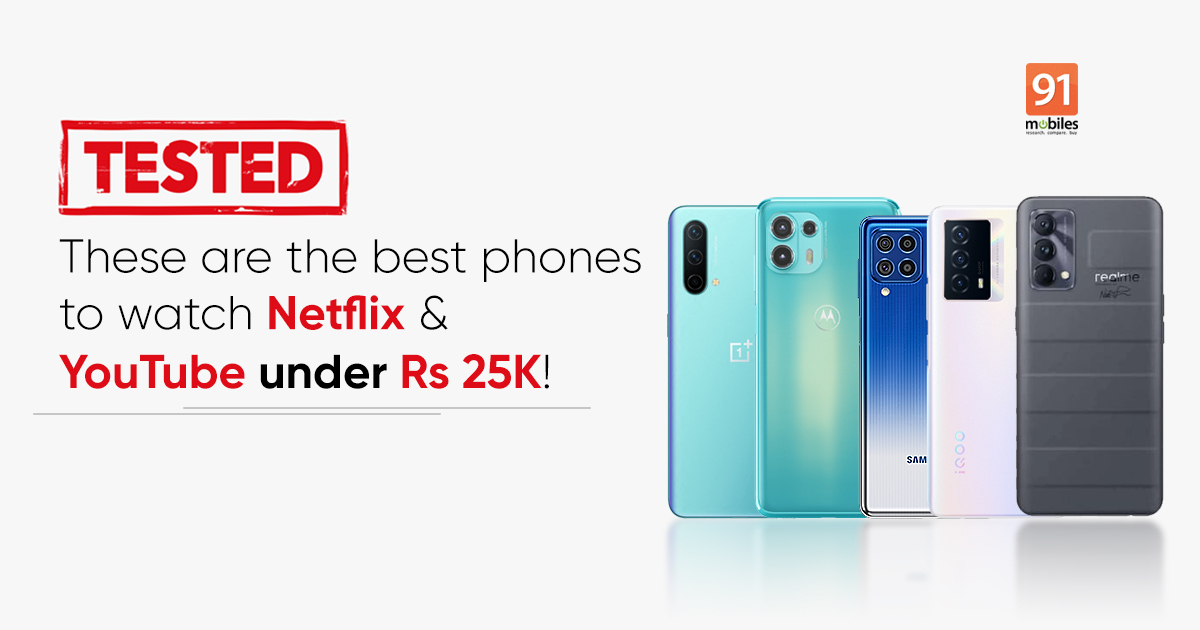
Okay, before we chart a list of phones that offer the best screens and whatnot, allow us to elaborate on how we intend to test these phones objectively. To that note, we will be taking a closer look at the smartphones’ media playback capabilities, audio setup, battery size, and charging speeds (a phone that charges quickly should, in theory, allow you to binge content for longer), peak brightness, and display technology. Now that you’re up to speed, let’s take a look at the best phones for consuming media under Rs 25K.
OnePlus Nord
OnePlus really hit the ball out of the ballpark with the OG Nord (review). Although the handset is a year old, it is still one of the best phones to watch movies on the go. The reason being, the device ships with a 6.44-inch AMOLED screen that relays vivid hues and colours. What’s more, the smartphone also offers a peak display brightness of 1,000 nits and can relay content from popular OTT services in HD, as well as HDR. We did test the phone’s playback specifications and sure enough, the handset can play shows like Daredevil on Netflix in HDR, which is great. What’s more, the device could comfortably run our five-minute, 108060fps HDR test clip on YouTube without dropping any frames either. Notably, the phone drops down its refresh rate to 60Hz when playing videos on Netflix and YouTube.
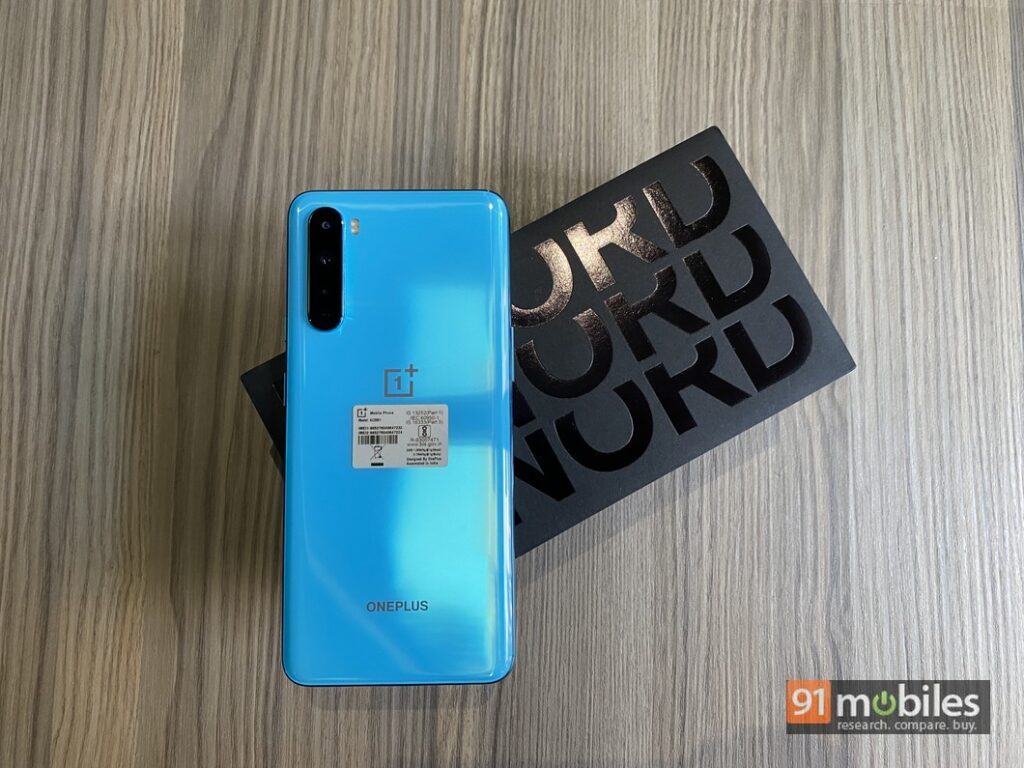
Rest assured, the OnePlus Nord offers a fantastic screen to consume content. Moreover, the device also offers a dual-speaker setup, albeit misses out on a headphone jack. Unfortunately, unlike most phones on the list, the Nord offers two selfie cameras up front, and consequently, the device features a meaty punch hole notch. As for charging, the phone ships with a 30W brick which, in our testing, could charge the device completely in an hour. Ergo, you should be able to refuel the phone quickly should it run out of juice in the middle of a binge session.
OnePlus Nord CE 5G
OnePlus had to cut some corners to get the price of the Nord CE 5G (review) down. Thankfully, the phone still ships with a fantastic screen that measures at 6.43-inches and is backed by AMOLED technology. Consequently, much like the OnePlus Nord, the Nord CE 5G will also relay vivid hues with deep, dark blacks. Moreover, the smartphone also ships with Widevine L1 certification, meaning it can stream content in HD from OTT services. That’s not all, as the device can also stream content in HDR from Netflix and the handset didn’t drop any frames in our 1080p60fps HDR test clip on YouTube either. Lest we forget, the handset offers a peak brightness of 1,000 nits too, which is great.
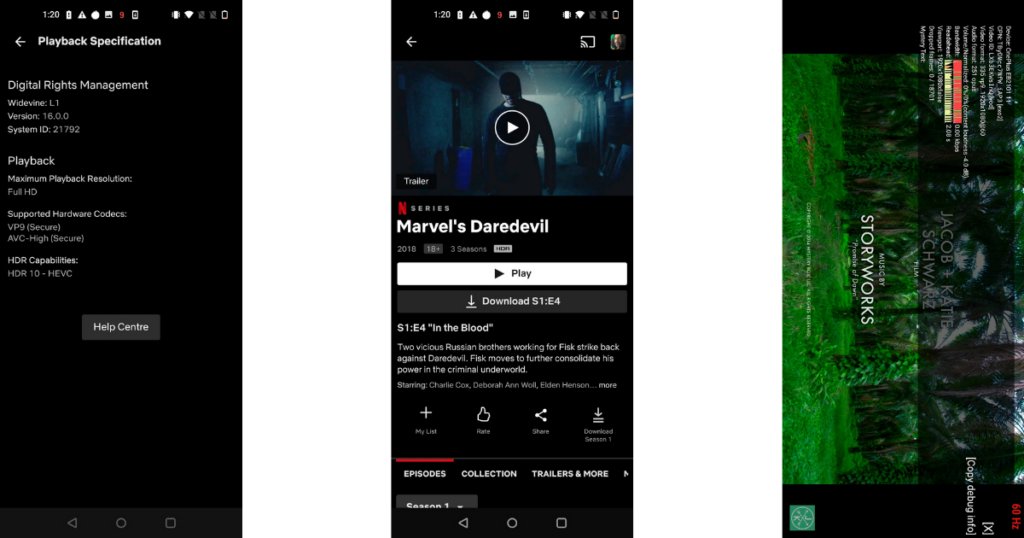
Interestingly, the OnePlus Nord CE 5G ships with a headphone jack, but the device omits a dual-speaker setup – do let us know what you make of this tradeoff in the comments below. Thankfully, unlike its pricier sibling, the OnePlus Nord CE 5G ships with a tiny punch hole notch that shouldn’t come in the way of watching movies or videos. Furthermore, the device also drops its refresh rate to 60Hz when consuming content on Netflix, etc.
Moto Edge 20 Fusion
The Moto Edge 20 Fusion (review) has, quite possibly, the biggest screen on any phone under Rs 25K, and the phone ships with a massive 6.7-inch OLED display. Coupled with its tiny punch hole notch, the phone should offer a more immersive movie-watching experience than say, the OnePlus Nord, which offers a smaller screen and a bigger cutout to house its dual selfie cameras. That said, while the phone comes with Widevine L1 certification and can stream shows in HD, the Edge 20 Fusion cannot stream content in HDR from OTT services like Netflix. However, you can stream HDR content from services like YouTube. Speaking of which, the phone didn’t drop any frames in our 1080p60fps HDR clip, which is great. Note that Motorola doesn’t specify the peak display brightness of the Edge 20 Fusion, but our internal testing pegs the panel’s peak brightness at around 600 nits.
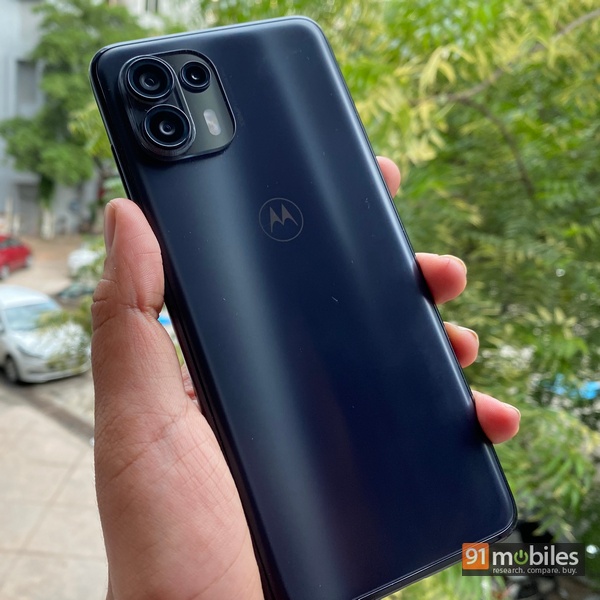
Unfortunately, the Edge 20 Fusion also misses out on a stereo speaker setup. The handset somewhat makes up for it by offering a headphone jack, though. We’d also like to add that the Edge 20 Fusion doesn’t smartly variate its refresh rate and stays at 90Hz even whilst watching movies. On the flip side, the smartphone features a beefy 5,000mAh battery that charges quickly thanks to the bundled 30W brick too. So, even if the battery backup takes a hit as the refresh rate stays locked at 90Hz when watching movies, the phone should still last a good while.
Realme GT Master Edition
Realme recently took to the stage and announced its GT range of phones in the country, including the GT Master Edition (review). Specs-wise, the handset ships with a 6.43-inch, Super AMOLED display that refreshes at 120Hz. Consequently, you will be greeted with vivid hues should you buy the phone. On the flip side, while the phone comes with Widevine L1 certification and can, in fact, stream HD videos from Netflix, the device doesn’t support HDR playback on the platform yet. We were able to get our 1080p60fps HDR test clip running on the phone, and buyers eyeing the set will be glad to know that the handset didn’t drop any frames when streaming the clip off of YouTube either. Moreover, with a peak brightness of 1,000 nits, the Realme GT Master Edition gets sufficiently bright and can be used comfortably even when it’s sunny outdoors. The phone also ships with a tiny punch hole notch, which is great.
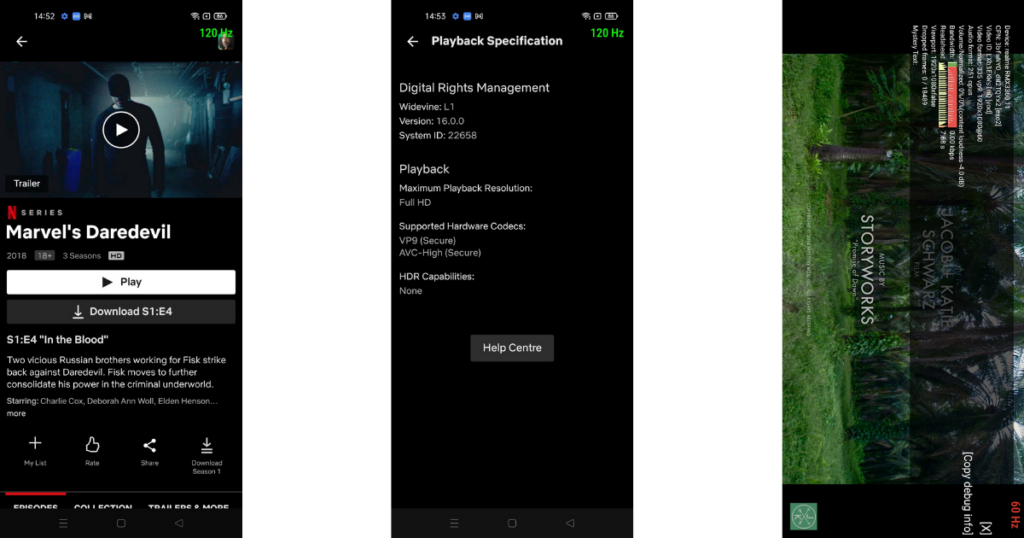
As for audio, the GT Master Edition ships with a single mono-firing speaker that doesn’t get too loud. The device does feature a headphone jack, though, so you win some and you lose some here. We’d also like to add that the phone drops its refresh rate to 60Hz during video playback and offers a 65W charger with the retail packaging, allowing you to top up the device in minutes.
iQOO Z5 5G
The iQOO Z5 is among the more affordable Snapdragon 778G phones in the country. Unfortunately, the handset’s performance chops come at a cost. To that note, the phone ships with a 6.67-inch panel that uses LCD tech. It does refresh at 120Hz though. Unsurprisingly, the panel’s viewing angles leave something to be desired and the colours don’t appear as lively either. The display’s peak brightness left a sour taste too, with the Z5 maxing out at 480 nits. Moreover, while the device can play videos in HD from OTT services, you will not be able to stream HDR media on the phone via apps like Netflix. Furthermore, the Z5’s panel is bordered by chunky bezels, which might be a little distracting for some users. On the bright side, the handset didn’t drop any frames when we were watching a sample HDR video on YouTube.

Thankfully, the phone somewhat makes up for its sub-par display by offering a fantastic audio setup. In fact, the Z5 is among the rare breed of smartphones under Rs 25K to feature both, a dual speaker setup and a headphone jack. Moreover, the smartphone ships with a beefy 5,000mAh cell that charges rapidly at 44W too, ensuring you don’t have to stay tethered to a wall charger for long when watching movies on the phone.
Redmi Note 10 Pro Max
Redmi took the market by storm with the launch of the Redmi Note 10 Pro Max (review), and for good reason. The device puts forth a well-rounded package and excels in a handful of different areas. On that matter, the phone features a 6.67-inch Super AMOLED screen that offers a peak brightness of 1,200 nits. What’s more, the display houses a tiny punch hole notch, ensuring buyers opting for the set are fully immersed in their movies. Furthermore, the handset supports both HD and HDR playback from various OTT services and can even play HDR content on YouTube effortlessly. As such, the device didn’t drop any frames when we were testing a 1080p60fps HDR clip on the platform.
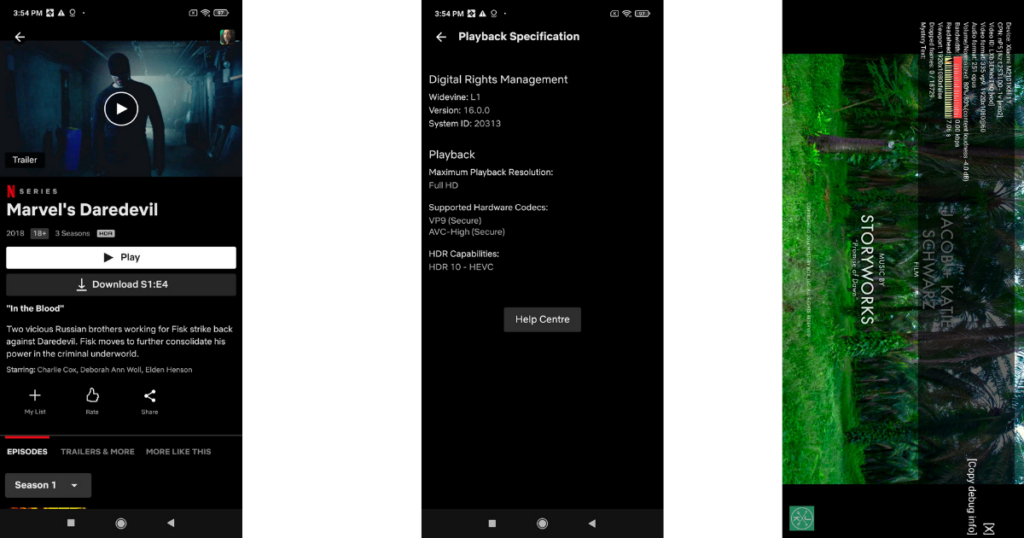
Furthermore, much like the iQOO Z5, the Redmi Note 10 Pro Max also ships with a stereo speaker setup and a headphone jack. Coupled with its 5,020mAh battery (supports 33W fast-charging), the Note 10 Pro Max will let you enjoy your favourite movies for hours on end.
Samsung Galaxy F62
Samsung has, for long, offered phones with gorgeous screens and the company’s F62 (review) is no different. The handset features a 6.7-inch Super AMOLED+ display that offers punchy hues. What’s more, the display even ships with sleek bezels and a tiny punch hole notch. We did run our standard set of tests on the phone and while the device could play content in HDR on YouTube, the smartphone can’t relay the same from OTT services like Netflix. Unsurprisingly, the smartphone didn’t drop any frames whilst playing the sample YouTube video. On the other hand, the unit’s 420 nits peak brightness might not cut it for some buyers.
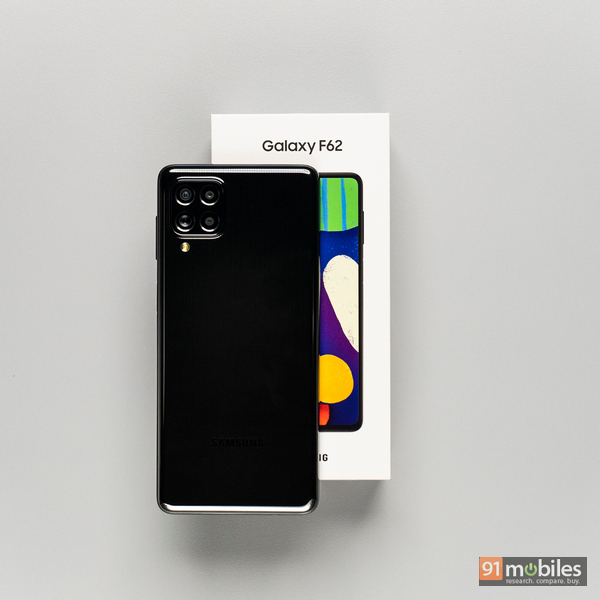
Moving on, the Galaxy F62 ships with a mono-firing speaker which in all honesty, doesn’t get too loud. That said, the device does get a 3.5mm headphone jack. On the battery side of things, the Galaxy F62 really blows the competition out of the water as the phone gets a 7,000mAh cell, which should comfortably last buyers a full day and then some, even with heavy usage.
OPPO F19s
The OPPO F19s (review) has a lot going for it, including but not limited to the device’s stunning AMOLED display. Spec-wise, the phone features a 6.4-inch, FHD+ panel that offers a punch-hole notch positioned towards the top-left of the screen. Unsurprisingly, the F19s’ screen is a treat to look at and buyers opting for the phone will be greeted with pleasant, vivid hues. Moreover, the phone comes with Widevine L1 certification, meaning it can stream content in HD from OTT services. Unfortunately, the device lacks HDR capabilities and cannot stream content in HDR from YouTube or Netflix. On the bright side (no pun intended), the phone offers a peak brightness of around 600 nits. For audio, the phone comes with a mono-firing speaker that gets reasonably loud. The device also comes with a headphone jack for wired audio output.
By now, it should be clear that the Redmi Note 10 Pro Max offers the best media consumption experience under Rs 25K, followed by the OnePlus Nord and the OnePlus Nord CE 5G. We’ve ranked the phones in order of their media prowess, so take a gander.
| Phone | Screen Size | Widevine L1 | Netflix HDR | YouTube HDR | YouTube frame drop | Display tech | Peak brightness | Dual speakers | 3.5mm output |
| Redmi Note 10 Pro Max | 6.67-inch | Yes | Yes | Yes | No | Super AMOLED | 1,200 nits | Yes | Yes |
| OnePlus Nord | 6.44-inch | Yes | Yes | Yes | No | AMOLED | 1,000 nits | Yes | No |
| OnePlus Nord CE 5G | 6.43-inch | Yes | Yes | Yes | No | AMOLED | 1,000 nits | No | Yes |
| Realme GT MasterEdition | 6.43-inch | Yes | No | Yes | No | Super AMOLED | 1,000 nits | No | Yes |
| Samsung Galaxy F62 | 6.7-inch | Yes | No | Yes | No | Super AMOLED+ | 420 nits | No | Yes |
| Moto Edge 20 Fusion | 6.7-inch | Yes | No | Yes | No | OLED | ~600 nits | No | Yes |
| iQOO Z5 | 6.67-inch | Yes | No | Yes | No | LCD | 480 nits | Yes | Yes |
| OPPO F19s | 6.4-inch | Yes | No | No | No | AMOLED | 600 nits | No | Yes |
As can be seen from the chart above, the Note 10 Pro Max can stream content in HD and HDR and offers stereo speakers and a headphone jack. Furthermore, the unit’s punch hole notch will not pose too many distractions and the phone’s 5,020mAh battery will allow you to binge a handful of episodes before requiring a top-up. Do let us know which device you’d buy for watching movies in the comments below.
The post [Tested]: Best phones for watching YouTube and Netflix on, priced under Rs 25,000 first appeared on 91mobiles.com.
via ©91 Mobiles









ليست هناك تعليقات:
إرسال تعليق